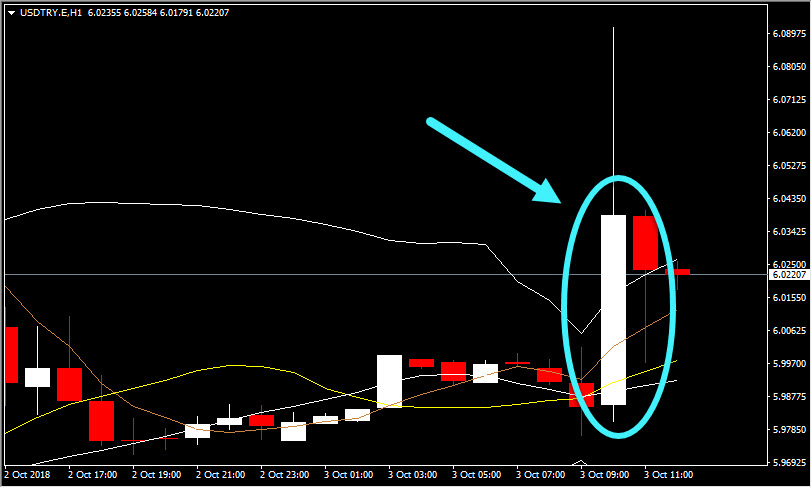The latest news have shown that inflation in Turkey stood at 24.5% y/y, compared to “just” 17.9% y/y last month. This prompted a well-justified, 500-pip depreciation of the TRY, with respect to the Dollar. It also provides me with the opportunity to discuss an important distinction when it comes to interpreting inflation results.
Remember that we have distinguished between supply-side (cost-push) and demand-side (demand-pull) inflation. As also discussed, demand-side inflation is always positive for the currency as it indicates that the economy is growing. The faster the demand-side inflation grows, the faster the economy will also grow. This should mean that more demand for the currency will exist domestically, allowing for less domestic money to flow abroad, which should appreciate the exchange rate.
Nonetheless, there also exists the dark side of inflation, which is driven by supply-side factors. As you may recall, supply-side inflation is affected by factors which increase the cost of production. These include wages and the cost of raw materials, with the latter being a stronger predictor of supply-side inflationary pressures, for reasons explained here.
In the case of Turkey, inflation was not caused by the economy’s growth but came as a result of the 25% depreciation in the Lira. Simple mathematics show that a 25% increase in the 17.9% July inflation rate would result in approximately 22.5%, close to what has been reported. The Lira’s depreciation is likely to have caused a severe increase in the cost of imported goods, with the blow to consumer spending becoming even harder as oil prices surged during the last few months. Given the increase in prices consumer spending power has most likely decreased as demand factors cannot adjust that fast to changes in the cost prices. Hence, this increase in inflation is likely to be bad for the economy of Turkey and thus should justify a depreciation of the currency. In addition, the increase in inflation is expected to continue if the Lira does not return to its previous levels.
An important question is how one can determine whether changes in inflation have been caused by supply or demand factors. The answer lies in examining the causes of inflation shocks: for example, if inflation changes by more or less in accordance to the change in bank lending and/or government spending, then we can gauge that this is caused by demand factors. However, if inflation increases by much more than these indicator would have implied and, in addition, the exchange rate is declining or wages are increasing by much more than justified by previous inflation rates, then the cause likely lies on the supply side and should be a cause for worry.
Still, as always, each case has its own characteristics and should be viewed individually and not draw conclusions based on generic rules-of-thumb. The traders’ task is to keep the above fundamentals in mind and ask the right questions at the right time before committing to a trade.
Click here to access the HotForex Economic calendar.
Want to learn to trade and analyse the markets? Join our webinars and get analysis and trading ideas combined with better understanding on how markets work. Click HERE to register for FREE! The next webinar will start in:
[ujicountdown id=”Next Webinar” expire=”2018/10/03 14:00″ hide=”true” url=”” subscr=”” recurring=”” rectype=”second” repeats=””]
Dr Nektarios Michail
Market Analyst
HotForex
Disclaimer: This material is provided as a general marketing communication for information purposes only and does not constitute an independent investment research. Nothing in this communication contains, or should be considered as containing, an investment advice or an investment recommendation or a solicitation for the purpose of buying or selling of any financial instrument. All information provided is gathered from reputable sources and any information containing an indication of past performance is not a guarantee or reliable indicator of future performance. Users acknowledge that any investment in FX and CFDs products is characterized by a certain degree of uncertainty and that any investment of this nature involves a high level of risk for which the users are solely responsible and liable. We assume no liability for any loss arising from any investment made based on the information provided in this communication. This communication must not be reproduced or further distributed without our prior written permission.



















